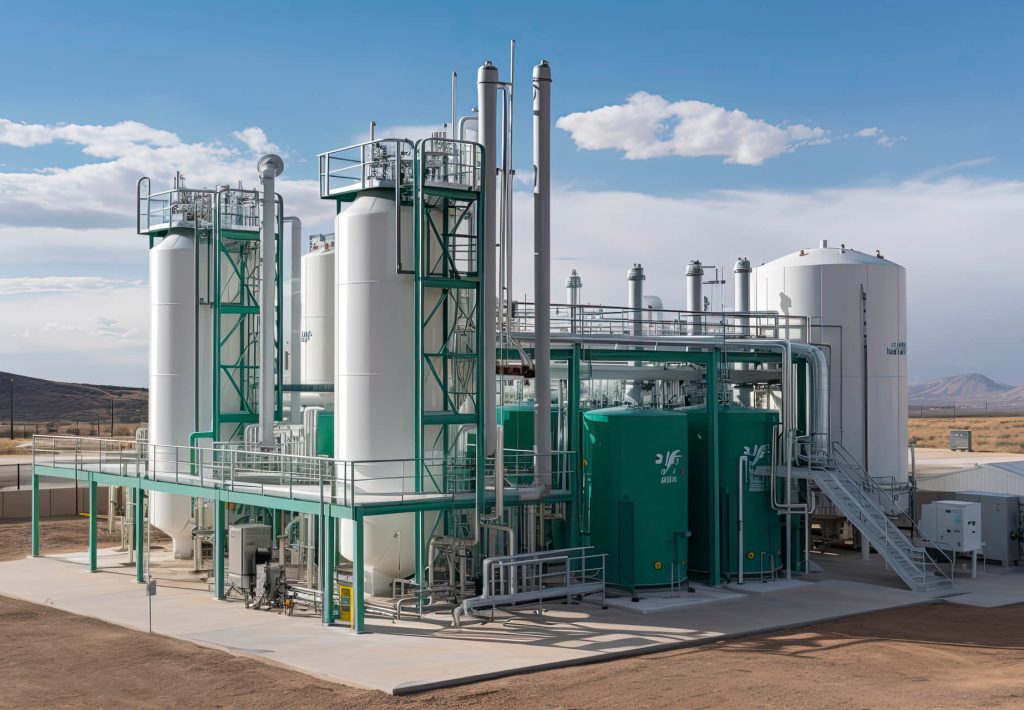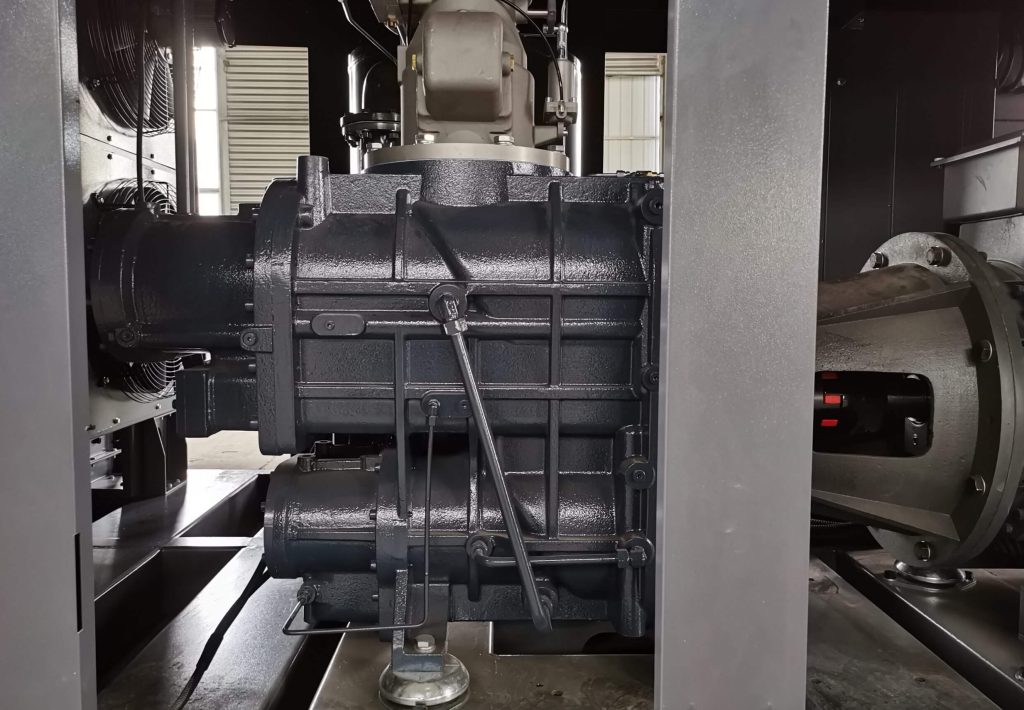Diesel-powered air compressors play a crucial role in situations where external power sources are unavailable, such as in mining, field construction, and disaster rescue operations. However, the complex system linking the diesel engine and the air compressor is prone to various faults during long-term operation. This article systematically reviews the common faults and solutions for diesel-powered air compressors, helping users achieve efficient maintenance and ensure stable equipment operation.
Common faults in diesel-powered air compressors include engine stalling, black smoke, blue smoke, clutch damage, lubrication system failures, insufficient pressure, and electrical issues. Solutions involve cleaning the fuel system, replacing oil seals and piston rings, adjusting the separation bearings, regularly changing lubricating oil, cleaning radiators, and checking circuits and safety valves. Regular maintenance and replacement of key components can improve equipment stability and extend its service life.

1. Diesel Engine Power System Failures
1.1 Diesel Engine Stalling
In actual operation, the diesel engine may stall unexpectedly without producing black smoke, disrupting the entire operation. The root cause is typically an abnormal fuel supply system. If the fuel tank filter has not been cleaned for a long time, impurities may accumulate and block the filter; cracks in the fuel pipes allow air to enter the fuel system, affecting fuel delivery. Additionally, a faulty fuel pump can cause poor fuel flow.
To address this issue, first thoroughly clean the fuel system, using professional tools to remove impurities from the fuel tank and pipes. Then, use a manual pump to remove air from the fuel lines, ensuring smooth fuel flow. If the diesel engine still fails to start after this, do not attempt to disassemble the fuel pump assembly as its internal structure is delicate and improper handling could cause damage. It is advised to contact professional maintenance personnel for inspection and repair.
1.2 Black Smoke Followed by Stalling
When the diesel engine emits thick black smoke and stalls with an abnormal load, the mechanical components and clutch of the air compressor should be investigated. If the air compressor experiences mechanical seizure, it will cause a sudden increase in engine load. If the clutch friction plates are excessively worn, power transmission may be impaired, leading to such faults.
To resolve this issue, first disengage the clutch and manually rotate the air compressor rotor. If significant resistance is felt, mechanical seizure is likely, and the air compressor should be disassembled to inspect bearings, rotors, and other components for damage or seizure. Also, check the fuel injectors by loosening each high-pressure fuel line and observing any changes in the engine speed. If loosening a specific injector does not affect the engine speed, it suggests the injector may be stuck and should be replaced.
1.3 Blue Smoke
Blue smoke from the exhaust indicates the burning of engine oil, typically caused by worn piston rings that allow oil to enter the combustion chamber. A seized fuel injector can also contribute to this issue.
To resolve this, first check the fuel injectors for issues such as sticking or oil leakage, replacing them if necessary. Also, regularly replace the piston rings and clean the air filter system to prevent dust from entering the cylinder and exacerbating piston ring wear.
2. Clutch and Transmission System Failures
2.1 Separation Bearing Damage
If unusual noise or localized high temperatures are heard during operation, the separation bearing may be damaged. Prolonged separation or incomplete disengagement can place excessive pressure on the separation bearing, leading to premature failure.
In such cases, adjust the separation lever clearance to the standard value. When replacing the separation bearing, ensure it is the correct model (360111), and that it is installed correctly to maintain synchronization with the diesel engine, preventing new faults.
2.2 Clutch Oil Leaks
Aging oil seals are the primary cause of oil leakage in the clutch. Common aging oil seal sizes include 45×65×12 and 90×120×12. Additionally, an excessive oil level can cause lubrication oil to leak from the seals.
To address this, replace any cracked oil seals promptly and adjust the oil level to maintain it at the middle position. Additionally, inspect the return oil pipeline for blockages and clear any obstructions to ensure proper oil return.
2.3 Gear Shaft Noise
If sharp friction or periodic noises are heard, the gear shaft may be malfunctioning. The gear shaft (model 42310) meshes with the inner gear ring during prolonged operation, causing wear and enlarging the clearance. Axial movement of the bearing (model 42313) can also lead to abnormal noise.
To resolve this issue, calibrate the gear mesh clearance to keep it within the 0.05 – 0.10mm range. When replacing the bearing, carefully install the copper cage in the correct order: first the inner ring, then the outer ring, ensuring proper installation.
3. Lubrication and Cooling System Failures
3.1 High Exhaust Temperature (>100°C)
Excessively high exhaust temperatures can severely affect the performance and lifespan of the air compressor. Common causes include insufficient lubrication oil or a clogged oil filter, which typically needs replacing after about 2000 hours of use. For cooling issues, excessive dust accumulation on the radiator can reduce cooling efficiency, and a stuck thermostat valve can prevent proper heat dissipation.
To resolve these issues, select the appropriate lubricating oil for different seasons—HS-19 for summer and HS-13 for winter—and replace the oil filter regularly. Clean the radiator fins to remove dust and debris, and check the thermostat diaphragm for integrity to ensure proper functioning.
3.2 Excessive Oil in Compressed Air
Excessive oil content in compressed air can affect the operation of equipment that uses the compressed air. Damaged oil-gas separators or clogged return oil lines can prevent proper separation of oil and gas, resulting in high oil content in the air.
Oil-gas separator filters should be replaced every 3000 hours of use. When replacing, check the one-way valve for leakage to prevent oil from leaking. Also, clean the return oil pipeline to avoid oil foam accumulation and ensure air quality.
4. Pressure and Air Supply Issues
4.1 Insufficient Exhaust Pressure
Restricted intake and air leaks are the main causes of insufficient exhaust pressure. If the air filter has not been cleaned or replaced for a long time, it may be blocked by impurities, reducing intake air. Loose pipeline joints or failure of the safety valve spring can also cause compressed air leakage.
To address this issue, clean the air filter regularly, replacing it every 1000 hours. Also, check the solenoid valve for responsiveness to ensure it opens and closes properly. Additionally, calibrate the pressure switch setting and check the safety valve’s activation pressure to ensure proper operation of the pressure system.
4.2 Frequent Safety Valve Activation
Frequent activation of the safety valve can disrupt normal operation and pose safety risks. Setting the pressure too high, exceeding the device’s rated pressure, or carbon build-up inside the valve can trigger frequent safety valve activation.
To resolve this, use professional tools to calibrate the pressure and adjust the setting to the rated value (e.g., 0.6MPa). Disassemble and clean the valve body at least once a year to remove carbon build-up and replace the fatigue spring to ensure proper valve operation.
5. Electrical and Control System Failures (New)
5.1 Compressor Fails to Start
In the electrical and control system, the compressor failing to start is a common fault. A lack of control voltage, such as a blown fuse, can prevent the circuit from functioning. Faulty relays that fail to close properly can also prevent startup.
To address this, first check if the fuse is blown and use a multimeter to test the voltage stability. Test the contact points of the Y-Δ starter to check for oxidation; if present, clean or replace the parts.
5.2 Automatic Shutdown During Operation
Automatic shutdown during operation can be caused by several factors, including incorrect phase sequence, unstable voltage, or excessive exhaust temperature (>102°C), which triggers the protection mechanism.
To resolve this, inspect the power cables for damage or short circuits and replace any damaged wires. Calibrate the temperature sensor to ensure accurate readings, avoiding false alarms that could cause frequent shutdowns.
6. Preventive Maintenance and Upgrade Suggestions
6.1 Seasonal Maintenance
Winter: To prevent difficulty starting the diesel engine and frost damage, use 40CD diesel oil with a pour point lower than -20°C. After stopping, thoroughly drain the diesel engine’s water tank and pipes to prevent freezing and rupture.
Summer: In high-temperature environments, increase the frequency of radiator cleaning to remove dust and debris, ensuring effective heat dissipation. Monitor oil temperature fluctuations and address any abnormal increases promptly.
6.2 Backup Machine Management
If backup machines are left idle for extended periods, issues such as rotor rust and dried oil lines may occur, reducing usability. Regularly run backup machines at least once a month for at least one hour to keep them in good working condition.
6.3 Key Component Lifecycle Management
Key components such as oil-gas separators, air filters, and lubricating oil have finite service lives. Follow the prescribed maintenance schedule: replace the oil-gas separator every 3000 hours, clean air filters every 1000 hours, and check lubricating oil viscosity every 500 hours. Replace oil if viscosity exceeds standards.
6.4 Daily Monitoring
Establish a comprehensive daily monitoring system to record operating current. Under normal conditions, the current should be within ±5% of the rated current; if it exceeds 10%, immediately stop the machine and investigate the cause. Also, check the belt tension, aiming for a downward deflection of 10mm. If the belt is too loose or too tight, adjust it promptly.
7. Conclusion
For diesel-powered air compressors’ troubleshooting, a comprehensive analysis of the mechanical, electrical, and hydraulic systems is essential. MINNUO recommends that users establish standardized maintenance records and provide regular training to operators to minimize downtime risks. For customized maintenance solutions, please contact our technical support team






 Email
Email sales:+86 15366749631
sales:+86 15366749631

